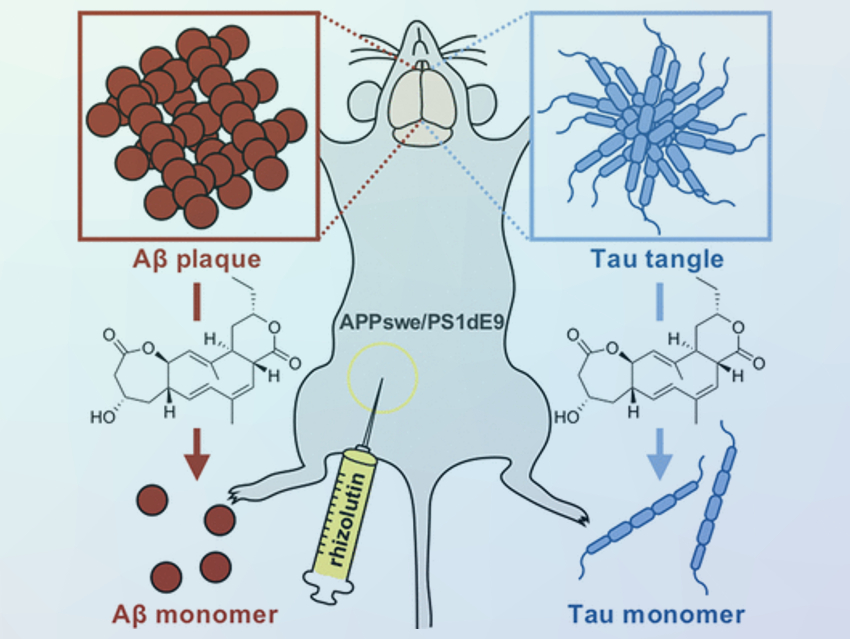A bacterium found among the soil close to the roots of ginseng plants could provide a new approach for the treatment of Alzheimer’s disease. Rhizolutin, a compound with a tricyclic framework, significantly dissociates the protein aggregates associated with Alzheimer’s disease both in vivo and in vitro.
The Rhizosphere
The area around the roots of plants is a complex ecosystem with numerous interactions between plants and diverse microorganisms. The so-called rhizosphere has been neglected in the search for new drugs, though it has much to offer. YoungSoo Kim, Yonsei University, Incheon, South Korea, Dong-Chan Oh, Seoul National University, South Korea, and colleagues have identified a natural substance called rhizolutin that may provide a basis for new Alzheimer’s disease treatments. Rhizolutin is produced by a Streptomyces strain that grows in the root zone of ginseng plants. Ginseng is an Asian plant used in traditional medicine, where it is said to be a tonic.
Through cultivation in a medium fortified with ginseng powder, the researchers were able to increase the rhizolutin production of the bacterium by a factor of ten. This allowed them to determine the structure of this new compound, which turns out to be a unique framework made of three rings bound together (a 7/10/6-tricyclic dilactone flanked by a seven-membered and a six-membered lactone ring).
Drug Lead against Alzheimer’s Disease
A screening of natural product libraries indicated that rhizolutin is a drug lead that can dissociate amyloid-β (Aβ) plaques and tau tangles (fiber-like aggregates of tau proteins), both of which are typical hallmarks of Alzheimer’s disease. Such deposits form when amyloid-β proteins fold incorrectly to form β-sheets, which can aggregate to form insoluble plaques and fibers. These lead to the death of nerve cells, nerve inflammation, brain atrophy, and the cognitive losses these entail. No effective treatment for Alzheimer’s disease has been found so far.
Through a variety of in vitro and in vivo experiments, the team was able to demonstrate that rhizolutin leads to clear dissociation of insoluble Aβ and tau aggregates. In cultures of neuronal and glial cells, rhizolutin was able to markedly reduce the inflammatory processes and cell death caused by Aβ. Rhizolutin was also able to significantly dissociate the Aβ plaques present in the brains of mice with Alzheimer’s. The process seems to be similar to the removal of incorrectly folded proteins through immunotherapy. Computer simulations suggest that rhizolutin enters into the hydrophobic regions of the aggregated β-sheets, initiating the dissociation.
- Rhizolutin, a Novel 7/10/6‐Tricyclic Dilactone, Dissociates Misfolded Protein Aggregates and Reduces Apoptosis/Inflammation Associated with Alzheimer’s Disease,
Yun Kwon, Jisu Shin, Kwangho Nam, Joon Soo An, Seung‐Hoon Yang, Seong‐Heon Hong, Munhyung Bae, Kyuho Moon, Yakdol Cho, Jiwan Woo, Keunwan Park, Kyeonghwan Kim, Jongheon Shin, Byung‐Yong Kim, YoungSoo Kim, Dong‐Chan Oh,
Angew. Chem. Int. Ed. 2020.
https://doi.org/10.1002/anie.202009294




